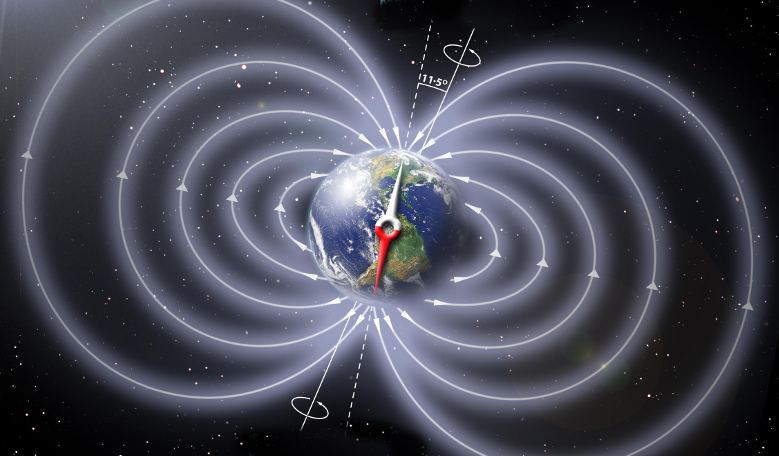It is probably not something you think of every day, but the fact that the Earth is one big giant magnet is the main reason humans populate the planet the way we do today. The swirling convective currents of molten iron in the Earth’s outer core throws out a protective shield, that protects life from the stream of charged particles constantly pouring out from the Sun.
This shield, or rather magnetic field as we know it by, also means that our planet comes with a handy built-in reference point for people and animals alike to use as a navigation aid, as like a normal bar magnet, albeit on a planet-sized scale, one end of it points north and the other points south. However, although prone to drifting on a regular basis, new updates from ESA’s swarm mission show that the magnetic north pole is shifting location more rapidly than before; just over three times as fast as it usually does.
Without the magnetic field, our little world would most likely resemble that of our red neighbour, Mars; a barren, lifeless rock with a wisp of toxic air for an atmosphere. Luckily for us, the field lines generated under the influence of the dynamo currents in the Earth's core, keeps us alive. It also means that the field is not static and therefore the magnetic poles generally tend to roam slowly year by year as the insides of our planet churn away.
These wanderings are monitored by the World Magnetic Model, a joint product of the United States’ National Geospatial-Intelligence Agency (NGA) and the United Kingdom’s Defence Geographic Centre (DGC).
The World Magnetic Model (WMM) is the standard model used by the the U.K. Ministry of Defence, the U.S. Department of Defense, the North Atlantic Treaty Organization (NATO) and the International Hydrographic Organization (IHO), for navigation, attitude and heading referencing systems using the geomagnetic field, along with a raft of uses for non-military purposes.
Your smartphone for example, contains a magnetometer that measures Earth’s magnetic field. In order to make sense of this information, iOS and Android operating systems use the magnetic model to correct the measurements to true geographic north. The geographic north pole is where the lines of longitude (meridians) converge in the north, so the locations of the two poles are normally completely different.
Around 50 years ago, the magnetic north pole was wandering the planet at a steady pace of around 15 kilometres a year. Its slow, predicted ramblings meant that the position of the pole only needed to be updated in the WMM every five years, and its next update was due at the end of this year.
However, in the last few years the magnetic north pole has picked up pace and it is now racing ahead at around 55 kilometres a year. Two years ago it crossed the international date line, leaving the Canadian Arctic and started heading towards Siberia.
This has meant that an out-of-cycle WMM has had to be released as the current model is now simply too inaccurate. Although the US National Oceanic and Atmospheric Administration and the British Geological Survey track its changes, ESA’s Swarm constellation has also been tracking the magnetic north pole since the mission was launched in 2013.
“In this model update, the latest Swarm data have been used to provide up-to-date information for users of numerous navigation systems,” said Nils Olsen from Denmark’s National Space Institute.
Launched on 22 November 2013, Swarm is ESA’s first constellation of satellites to advance our understanding of how Earth works, by measuring precisely the magnetic signals that stem from Earth’s core, mantle, crust and oceans, as well as from the ionosphere and magnetosphere.
Although it is not necessarily a sign that Earth’s magnetic poles are going to flip – a phenomenon that has occurred many times throughout our planets history – over the last 20 million years, a pattern of a pole reversal has been happening about every 200,000 to 300,000 years and it has been more than twice that long since the last reversal.











